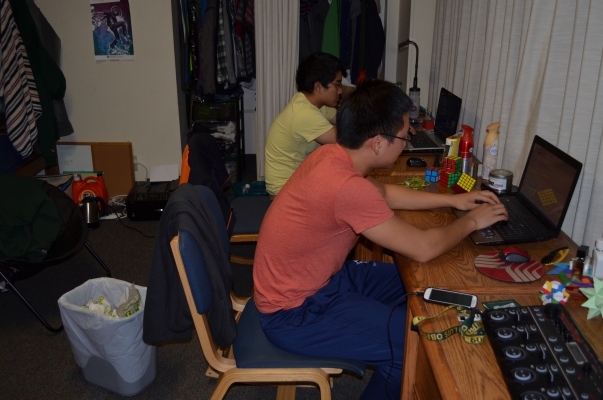Highlights:
Brandon Okamura shares his projects as a second year student.
Kathy Chen talks about the advancements with the 3D printer in the materials engineering department.
Cal Poly is full of many great minds, looking for ways to either make their lives easier or help others in the same way. Both a software and a hardware prowess is present in all grades here.
Second Year, but Already Working

A great example of somebody doing just that is second year computer engineer Brandon Okamura.
“Cal Poly is one of the best engineering schools, and I’m glad I’m going here,” Okamura said.
He’s working on an RFID, radio-frequency identification, scanner that will be able to scan his phone and it turns his computer on and off.

He also has a DHCP server, which will broadcast your IP address when you hook up internet to it. “I mainly want to use this for my own web server, just a local web server.”
“Computer engineering is both software and hardware.”
Okamura has a set up in his room that allows him to access a website from his computer to turn on and off his fans and lights.
His goal with the major is really just to have fun, he likes it and it’s what he does. Programming is his goal after school. He currently works at Tapestry Solutions, and for about 15 hours a week he goes there and programs for them.
Makerbots for Makers
Last quarter the materials engineering department got a 3D printer for the first time ever. It’s quite an achievement for the department as they can now prototype their ideas before they completely make it.
“We had the MATE freshmen each come up with a Solidworks drawing that got 3D printed for them,” Kathy Chen professor of materials engineering as well as the department chair said.
Solidworks is a 3D design tool that allows you to create 3D models to visualize in a computer that can then program the printer to create.
“Our juniors are currently using the Makerbot for some projects,” Chen said.
The objects at the moment are pretty small, but still cool precursors as to what can happen in the future. Apparently, it takes a much longer time, and longer planning for something to be printed with a hollow center.
3D printers are the new cutting edge of the technological world as they have so many uses. It will be interesting to see how the department uses it to make projects in the future.
Tags: Technology, Maker, Materials, Engineering, Second, Year, Cal Poly, Arduino, Programming











